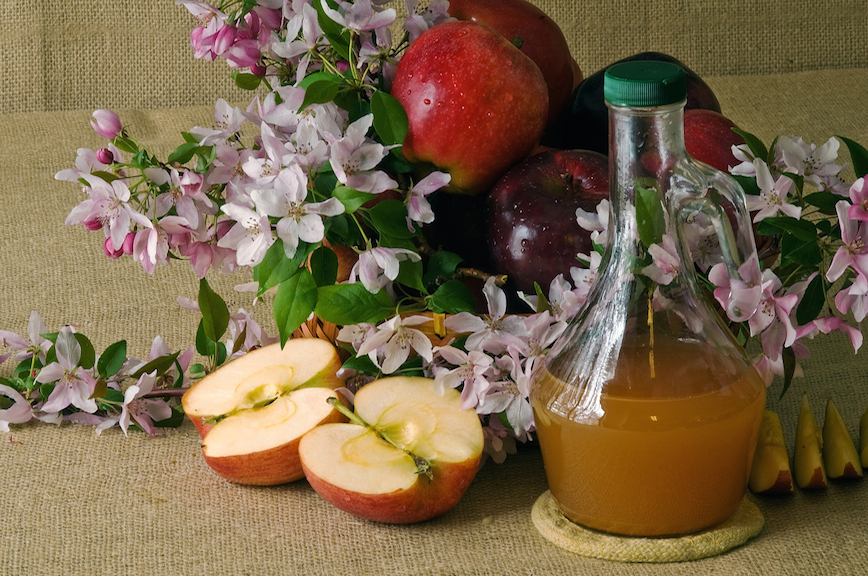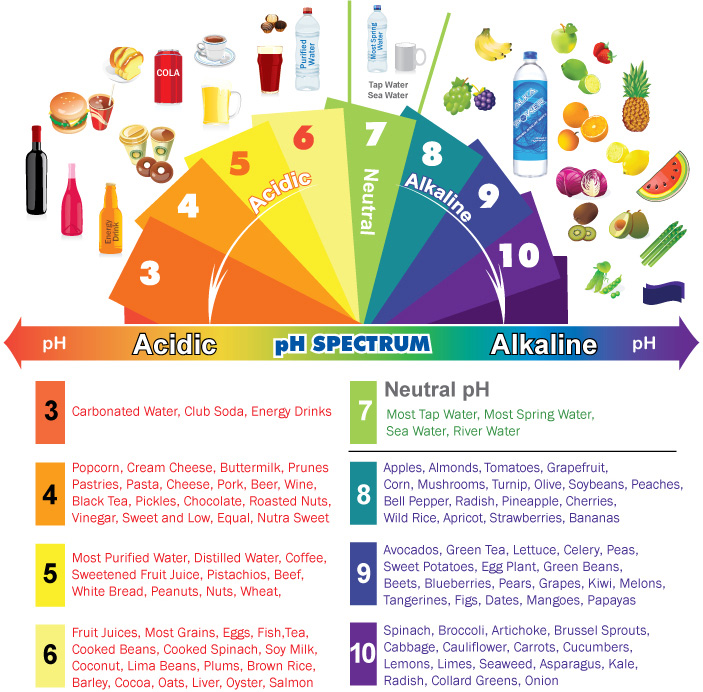04 Oct Ayurveda and Fall part 1
Ayurveda and Fall part 1

On week 80 let’s take a look at what the ancient system of Ayurveda is about and what modalities are available to us to enter fall in an aware synergy with this season so we can live in harmony and wellness with mother earth and attune our bodies to be in harmony with it. When we live conscious of mind, body, and spirit we are whole and we can function from well-sustained energy that supports us in every aspect of our lives.
You may think, what this has to do with beauty? well is very simple a well-balanced health and a calm nervous system, assist to beauty from the inside out in all levels, when we feel good we radiate an inner glow through our eyes and smile and that is really beautiful.
Let’s take a tour of our body and what goes on in fall, so with this information, we can be aware of how we work with the earth’s rhythms in the different seasons and where we can improve, and what is better for us to refrain from, keeping in mind that takes persistence and dedication from our part it just doesn’t happen overnight be gentle with your self, stressing over it, is not what the goal is, that will only add tearing down health, just take your time and have fun.
Share with family and friends so they can also benefit from it, and thank you from all of us we appreciate the loyalty and love that you send to us.
Our Muscles & Colon
This video can truly explain why we have pains, dryness and so much more and how easy is to correct it
Fall as you may know already is the opposite of spring season, by late September as our reduced blood flow leaves our muscles it induces fatigue. In fall the days start to grow darker earlier, so a comfortable evening curled up on the couch or our beds with a favorite movie or a book seem to be the thing to do hmmm I love the idea and for me that includes my sweet puppies. Our smooth muscle tissue and that includes the tissue of our colon, it starts to become sluggish when the temperature and pulse rate drop. TIs a fact that the colon, is also sensitive to stress, and holds the wear and tear of the autumn season.
Indigestion & Electrolytes
It is a process called cold diuresis, the name Diuresis refers to the physiological process by which urine production in the kidneys is increased as part of the body’s homeostatic way to maintain our fluid balance. This action causes fluid loss in Autumn. Cold diuresis is a response to vasoconstriction from our bodies. As our blood vessels constrict, it increases blood pressure is kind like squeezing the air inside a balloon. Our kidneys then proceed to release the extra pressure by removing fluids from circulation and emptying them into the urine and that is their job to balance the system. A summer of hot sweating followed by cold diuresis may leave you dehydrated and electrolyte deficient this is good to keep in mind. So it is important to keep in mind to add foods that can support electrolyte, juicy and salty taste encourages water retention for dry Vata. Vata types should avoid dry foods in the fall altogether so their system can function optimally.
Cold Feet & Warm Socks

Some people get cold feet even when wearing extra warm socks to warm their feet. Too much of tight clothing like socks can’t coax blood out of hibernation once it moves to the core. The body at this point may simply lack the strength to maintain core temperature and warm our feet. A sweater to heat the core does a better job than an extra pair of socks to cure cold feet, especially tight ones. Lifestyle changes, such as warm clothes and indoor heating, can convince the body it has heat to spare. Additionally, daily oil massage in the morning before bath coats the skin and prevents evaporation. As in summer sweat, evaporation causes significant heat loss. Oil massage thus helps retain heat by creating a protective barrier, let’s be aware of the kinds of oil that can help with this process. Once the pathological cold has penetrated our system, hot baths may be the only way to restore circulation. A pinch of turmeric keeps circulation strong. Sour lemons in morning tea convince sweat glands and stomach glands to stay juicy, Ginger lemon tea is a great aid here.
Fall is a time of transition. It is evident everywhere around us. Trees and shrubs are quietly undressing in preparation for the winter in their beautiful rhythm of the seasons. There is a subtle browning of the earth she goes within. Temperatures, which, just a few weeks ago were raging with the intense heat of summer, are beginning to hint at the telltale crispness of autumn. And there is the wind: slowly gathering strength, carrying the tides of winter on its breath to its role in nature. Fall harbors a certain emptiness that can leave us feeling exposed and a little raw, but it is also filled with possibility—a time when we, too, can strip down to a quiet essence of being and savor the simplicity of life and heart connection. The fall brings with it a predominance of air element and prana (the vital breath, the subtle essence of life) is abundant in the atmosphere at this time. Autumn is dry, it can be rough, windy, erratic, cool, subtle, and clear. These are all qualities shared by Vata dosha, and because like increases like, autumn is considered a Vata season. This same principle illustrates why taking a few simple steps to balance Vata dosha this fall can be tremendously beneficial to be in balance
Emotions, the Mind, Inspiration time

The fall is a time for inspiration and to work on new ideas. The movement of blood from the extremities back to the core increases blood flow to the mind a very interesting process of the intelligence of our body. The opportunity to reflect on the last few months could stir up emotions as well. The Wind, sudden temperature shifts, and the school season also provoke higher stress levels this time of year. According to Ayurveda, keeping the nervous system stable through fall is our number one tool for maintaining strong immunity and staying healthy. Ashwagandha is Ayurveda’s most important herb for Vata-type anxiety and Chywanprash helps build immunity.
Routine & Flexibility
When we wear oneself ragged in the Fall social calendar it can result in a compromised immunity for flu season. Alternatively, relaxation and downtime free up the energy to help the body prepare for winter. Skipping meals, staying up late, and irregular mealtimes, toxic process food that had never seen sun or soil, create stress and deficiency. Here is a great contributor to check, Joyful Belly offers a nurturing fall program called Restoring Youth and Vitality to prepare the body for winter.
Ayurveda is an ancient science based on elemental principles that pertain to life on earth and the connection to it with body, mind, and soul is no separation here. Ayurveda recognizes the elements of ether, air, fire, water, and earth as the building blocks of the natural world. According to Ayurveda, these five elements pair-up in three combinations to form the primary forces of nature called doshas. Ether and air from Vata dosha. Fire and water make up pitta dosha. Water and earth create Kapha dosha which we all possess in ourselves.
Fall Is a Great Time for an Ayurvedic Detox
Each one of us has a unique mix of the three doshas, although we tend to be dominated by one at any given time. Ane the seasons are also governed by its own doshic activity. The ayurvedic theory says, that by the time autumn comes around, we have accumulated plenty of heat in our tissues from the summer heat—fiery pitta dosha. When the leaves dry up and the weather starts to change, Vata dosha begins to take over and the one governed by air and marked by change, instability, and anxiety when not balanced. If we would speak metaphorically, what happens when you add random blasts of air to a fire? It burns even brighter right?. So Ayurveda system says that when the accumulated heat of pitta is fanned by vata, it can lead to mental and physical burnout and we definitely don’t want that, it stresses our adrenals and nervous system and putting some of the body’s natural detoxification processes on hold.
Let’s talk about the liver, for example. It is the body’s natural detoxifier and one of the primary organs in which excess pitta can accumulate and cause serious problems. The liver processes not only the foods and drinks we ingest but also many of the harsh chemicals we encounter on a daily basis—flike prescription and over-the-counter medications, over-processed foods to cosmetics loaded with petroleum ingredients and synthetic perfumes to polluted matter in the air. And then the liver gets overloaded with excess pitta (these put tremendous stress on the liver), and that has a large effect on our overall wellness. The overtaxed liver can result in migraines, irritability, rashes, anger, and skin issues and so much more. “It will make us tired, we get sick easily, we will gain or lose too a lot of weight. These two systems in the body are designed to “transform” toxins when the liver and the digestive tract become overwhelmed, we collect a kind of toxic sludge made up of all the waste products that the body has not been able to properly break down, digest or otherwise expel, creating much toxicity.
In Ayurveda, the toxins our body cannot process have a name: Ama, the meaning in Sanskrit is “that which harms or weakens” no so good. Ama is not only a kind of physical sludge but also as a psychosomatic sludge that pollutes the mind. Accumulated ama is the basis for many diseases and emotional disturbances—and from a physical standpoint, it creates an appealing host environment all the illnesses that blow in on autumn’s winds.
Do You Really Need to Detox
We don’t think that we have to worry about ama, well not so fast. We all do, as a result of poor diet choices, unhealthy lifestyle habits, the stress in general, lack of hydration—even just living and breathing in a polluted world with pesticide additives to most products. No matter who you are, you’ll end up with ama, and is a reality for us humans and even animals. Now the question we have to ask ourselves is, ‘What can we do about it?'”
Ayurvedic Detox
To protect your health year-round, but particularly during the fall, Ayurvedic health educators say it’s important to slow down, support your liver’s natural ability to remove toxins from the body, and take stock of the influences that you allow into your life—from the kind of food you eat to the amount of time you spend in front of an electronic device (computer, cell phone, TV).
Unlike some popular cleanses that ask you to undergo dramatic fasts or to take other extreme measures, Purva karma (which literally means “up-front actions”) is designed to support, instead of shock, your system. “Rather than aiming to eliminate toxins at any cost, Purva karma gently balances the whole person so that they can detox without destabilizing the body in any way,” Blossom explains. “It is a middle-path cleanse that uses nourishing foods, herbs, and self-care techniques to rejuvenate the body rather than simply strip it down, which can leave you even more vulnerable going into winter.”
Blossom says that a middle-path method of cleansing includes a simplified diet, yoga asana, self-massage, nasal irrigation, herbs, meditation, pranayama, and reflection. During the cleanse, you’ll forgo substances and habits that contribute to liver overload—such as processed foods or alcohol—and the unaddressed stress that strains your nervous system. You’ll also spend time thinking about what influences you want to keep in your life and what you might want to let go of. The main key to Purva karma is a suspension of bad habits. Then and only then can we have space to establish the good habits we need to create the kind of health and vibrancy that we all want in our life.”
Start Slowing Down
Taking action and start reducing stress and mental overactivity is perhaps the most important element of a successful step in any detox plan. Constant rushing, over multitasking, and information overloads are the trifecta of North American toxicity. And like an overtaxed liver, an overtaxed mind and nervous system can lead to a host of health issues, including adrenal fatigue, insomnia, irregular menstrual cycles, indigestion, and unwelcome weight gain.
The first step in reducing the toxicity created by an overloaded life? Slowing down. During the next seven days, adjust your schedule so you have time to prepare and eat your meals in a relaxed manner, practice daily yoga, and take regular meditation breaks. By saying “no” to the outside influences that pull your attention and energy in so many directions—and replacing them with healthier choices—you’ll begin to tune in to your body’s natural rhythms and detox more effectively.
The Detox Diet
Next, you need to nourish your body with healthful, cleansing foods. At the heart of the dietary program is kitchari, a simple dish of rice and mung beans widely used throughout Asia to purify the body. Its balance of protein, carbohydrates, and fat makes for an easy-to-digest yet highly nourishing meal. Kitchari is also tridoshic, which means that it’s appropriate for all three doshas. “The lightness of the dish reduces Kapha in the body,” Blossom says. “At the same time, it stabilizes vata by offering a complete source of protein. And the astringent nature of the beans cools pitta, so kitchari is naturally anti-inflammatory.” Best of all, eating kitchari twice daily keeps hunger and cravings at bay, he says.
Ayurvedic cleansing also calls for ghee (clarified butter), which lubricates the digestive tract and facilitates the elimination of toxins from the body. Spicy teas and chutneys are recommended to keep the fires of digestion stoked throughout the cleanse; and Triphala, a traditional Ayurvedic digestive tonic (made up of three fruits—amalaki, bibhitaki, and haritaki) with antioxidant properties, acts as a mild laxative. “Triphala is a classic example of an Ayurvedic remedy that supports the system and preserves what is good while it gets rid of toxins that will sicken the body,” Blossom explains. “Taken together, all parts of this plan make sure you’re getting everything you need to stay healthy and you won’t be malnourished in any way.”
Cleansing Yoga
Specific yoga poses can help expedite the detoxification process. The heating and twisting sequences designed for this plan can help move toxins from your tissues through your lymphatic and digestive systems so that they can be eliminated from the body. In addition, restorative poses, relax the nervous system and mind and help settle the body—which is especially important during and after a detox cleanse. Restorative poses will also help bring you into a state of receptivity that’s perfect for the season, says New Jersey yoga teacher and restorative teacher trainer Jillian Pransky. “I look at autumn as a transition into a new year,” she says. “I look at nature: The harvest is over, and it’s time to clear out. It’s an opportunity to till the soil and plant the seeds for next year’s harvest. Once we do this for ourselves, we can recommit to what is working for us and set ourselves up to get more of what nourishes us in our lives.”
Self-contemplation
As you embark on the program, contemplate the ultimate reason: “Why am I doing this?” By interrupting your normal patterns, cleansing provides a unique opportunity to practice svadhyaya, self-study. No matter what your motivation is—better health, a simpler life, a deeper yoga practice—you’ll be amazed at the insights you can gain when you just slow down and start to listen.”The body should be telling us all the time what to do and what not to do—it knows what’s good for it and what is not,” Svoboda says. Getting out of our own way is finely the key.” And that is the point, for the most part. It is ideal that at the end of the cleanse, it is recommended to take a day to meditate, be quiet and observe, you may want to ask yourself: ‘What can I do from now on to make my life the best it can be? What are the habits that I am doing to sabotage myself? and how can I help that? just becoming aware is a huge step.
During a detox, it is encouraged to take time to contemplate not only what you want for your own life but also what you want to put out into the world and all around you. If you can, spend at a half or a full day in silence, and spend time in nature or journaling about your experience. Did the cleanse give you clarity about how you may be exerting energy in ways that don’t serve you, and where you can use that energy more effectively, perhaps even to help a larger cause?
Get clear on the answers, and your life will get simpler: Do what works; don’t do what does not work, it hurts you on many levels. As we temporarily change our daily routines, we open ourselves up to seeing and feeling from whole new perspectives and we grow in evolution.
Ayurvedic Fall Cleanse Recipe: Harvest Stew
This stew is easy to digest and is made with seasonal vegetables.
Ingredients
2 tbsp olive oil
1 small onion, medium-finely diced
1–2 tsp of high-quality sea salt
1 large carrot, finely chopped
2 small parsnips, finely chopped
2 cups butternut squash, diced to taste
2 cups green cabbage, diced
2 tsp fresh rosemary leaves
2 tsp fresh thyme leaves
4 cups vegetable stock
Preparation
In a large soup pot place, the olive oil on heat at medium-high, then sauté the onions until transparent. When onions start to get clear, add a pinch of salt and the carrot. Add parsnips until they feel soft, repeat with squash, and then cabbage last.
Taste it and add salt to your like and continue to sauté vegetables until they begin to slightly stick to the bottom of the pan.
Add the rosemary and thyme, stir, and deglaze by adding a little vegetable stock Add the rest of the stock. Bring to a boil, reduce to a simmer, cover, and simmer on low for about half-hour. Taste occasionally and add, rosemary, or thyme until the desired flavor is achieved.
And there it is a delicious dish.
Part 2 of Ayurveda and Fall it will come soon


 In week 79 we are sharing the facts and unlimited usage of VINEGAR, for centuries fermentation has been used in many cultures, and it continues to do so. I grew up with foods being fermented by my mother or the Nana, both of them taught me all the values of fermentation. Here, we wish to share it, so you and your family can benefit from it, Our family uses Vinegar from food to hair, skincare pets, to repel insects and so much more.
In week 79 we are sharing the facts and unlimited usage of VINEGAR, for centuries fermentation has been used in many cultures, and it continues to do so. I grew up with foods being fermented by my mother or the Nana, both of them taught me all the values of fermentation. Here, we wish to share it, so you and your family can benefit from it, Our family uses Vinegar from food to hair, skincare pets, to repel insects and so much more.

 Make sure you get the raw Apple Cider vinegar to get the most benefits from it. Apple Cider vinegar which is unfiltered, unheated, unpasteurized with plenty of the MOTHER VINEGAR. The mother is made up of living nutrients and bacteria. This is were most of the health benefits come from. It doesn’t have a great look, but is the most nutritious and has many of the bacterial and anti-fungal properties.
Make sure you get the raw Apple Cider vinegar to get the most benefits from it. Apple Cider vinegar which is unfiltered, unheated, unpasteurized with plenty of the MOTHER VINEGAR. The mother is made up of living nutrients and bacteria. This is were most of the health benefits come from. It doesn’t have a great look, but is the most nutritious and has many of the bacterial and anti-fungal properties. Apple Cider vinegar for the Skin:
Apple Cider vinegar for the Skin: